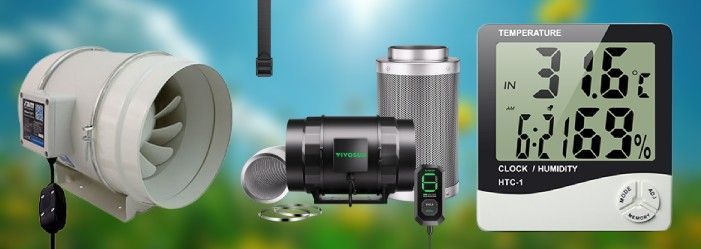Hydroponics in Hot Weather
June 25, 2025
Automate the fans and cooling systems to help them grow at their best

Providing fresh air for hydroponics in hot weather is crucial to maintaining optimal plant health, preventing heat stress, and keeping humidity and CO₂ levels in balance. Here’s how to effectively manage it:
1. Ventilation
- Active Ventilation: Use inline fans and exhaust fans to push out hot, stale air and draw in cooler, fresh air.
- Air Intake: Install filtered air intakes low on the walls to pull in cooler outside air while preventing pests.
- Cross-Ventilation: Position fans on opposite sides of the grow area to encourage airflow across the plants.
2. Evaporative Cooling
- Use evaporative coolers (swamp coolers) or mist systems to reduce temperature and increase humidity.
- Be cautious in already humid areas, as added moisture can lead to mould and disease.
3. Air Conditioning (AC)
- For precise climate control, especially in sealed grow rooms, install portable or mini-split AC units.
- Pair AC with a dehumidifier to maintain ideal humidity levels (50–70% for most crops).
4. Carbon Dioxide (CO₂) Management
- In hot weather, plants consume CO₂ rapidly. If you're using sealed rooms, consider CO₂ injection systems (e.g., CO₂ tanks or generators) to maintain ~1000–1500 ppm.
5. Shade & Insulation
- Use shade cloth or UV-filtering greenhouse films to block excessive sunlight.
- Insulate walls and ceilings to reduce heat gain.
6. Monitor Environment
Use sensors for:
- Temperature
- Humidity
- CO₂ levels
- Airflow
Link these to a climate controller to automate fans, AC, CO₂, and humidifiers.
7. Night Cooling
- Run exhaust systems more aggressively at night when outside temperatures drop, to purge built-up heat.
Feel free to contact us about your setup (indoor/outdoor, scale, climate zone) and we can tailor recommendations more specifically.

